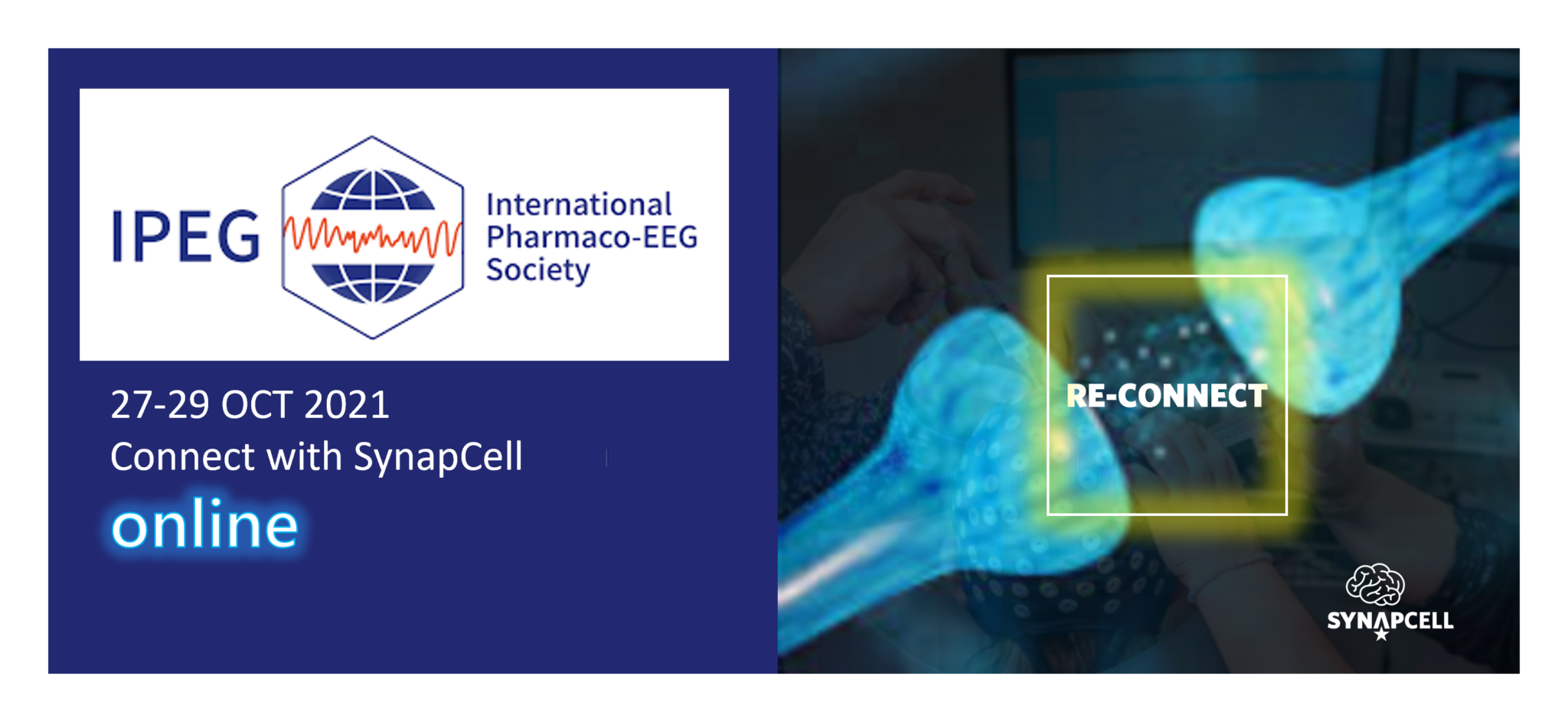INTERNATIONAL PHARMACO EEG SOCIETY - IPEG2021

SynapCell is proud to participate to the International Pharmaco-EEG Society’s event: IPEG2021. Learn more about evoked responses by electrical brain stimulation with our brand new technology platform to study brain excitability and developed by our newly graduated PhD Eloïse GRONLIER.
She will get into the details of her work during the event. We are very proud to have her onboard, again congratulations for her tremendous work along these 3 years!
Let’s meet online Oct.27-29 !
ABSTRACT
Single pulse electrical stimulation evoked responses: A pioneering preclinical EEG tool to evaluate brain excitability and uncover biomarkers in neurodegenerative disorders.
Eloïse Gronlier1, Julien Volle1, Venceslas Duveau1, Olivier David2,
Keywords: direct electrical stimulation (DES), intracranial electroencephalography (iEEG), local field potential (LFP), rodent, Parkinson’s disease
Background: Brain excitability can be defined as the ability of the cortex to produce a response following a brief direct stimulation. This phenomenon is particularly interesting because it is thought to produce much more informative data than simply recording spontaneous brain activity. According to standard systems theory, the best way to infer the state of a system is to record and characterize its impulse response to a brief event. This unique technique allows to infer brain connectivity and dynamics which can be altered in several neurological disorders such as Parkinson’s disease (PD).
Methods: During the first step of this project, we have been able to transfer a technology used in clinic, based on brain excitability, to the preclinical stage. This methodological approach was developed in freely moving rodents to overcome the confounding effects of anaesthetics. A proof-of-concept study was realized in sham animals in control conditions and following a pharmacological challenge (Reserpine) to assess the relevance of this method to study the dynamic effect of a molecule.
Results: In a second step, we applied this technique in an animal model of PD, the 6-OHDA lesioned rat, in order to identify a specific EEG signature. We focused our effort on PD because of its protracted prodromal phase and well-known altered connectivity within the cortico-basal ganglia-thalamo-cortical circuits. This analysis highlighted striatal excitability dysfunction compared to control animals. Those EEG specificities were sensitive to levodopa injection which normalized this excitability dysfunction.
Conclusion: In this study, we demonstrated that inferring brain excitability using electical stimulation could be a relevant tool to discover new signatures in PD and could be extended to other pathologies involving excitability dysfunction (e.g: Alzheimer). Such unique methodological approach would also assist pharmaceutical companies for drug development before their application to clinical trials.
